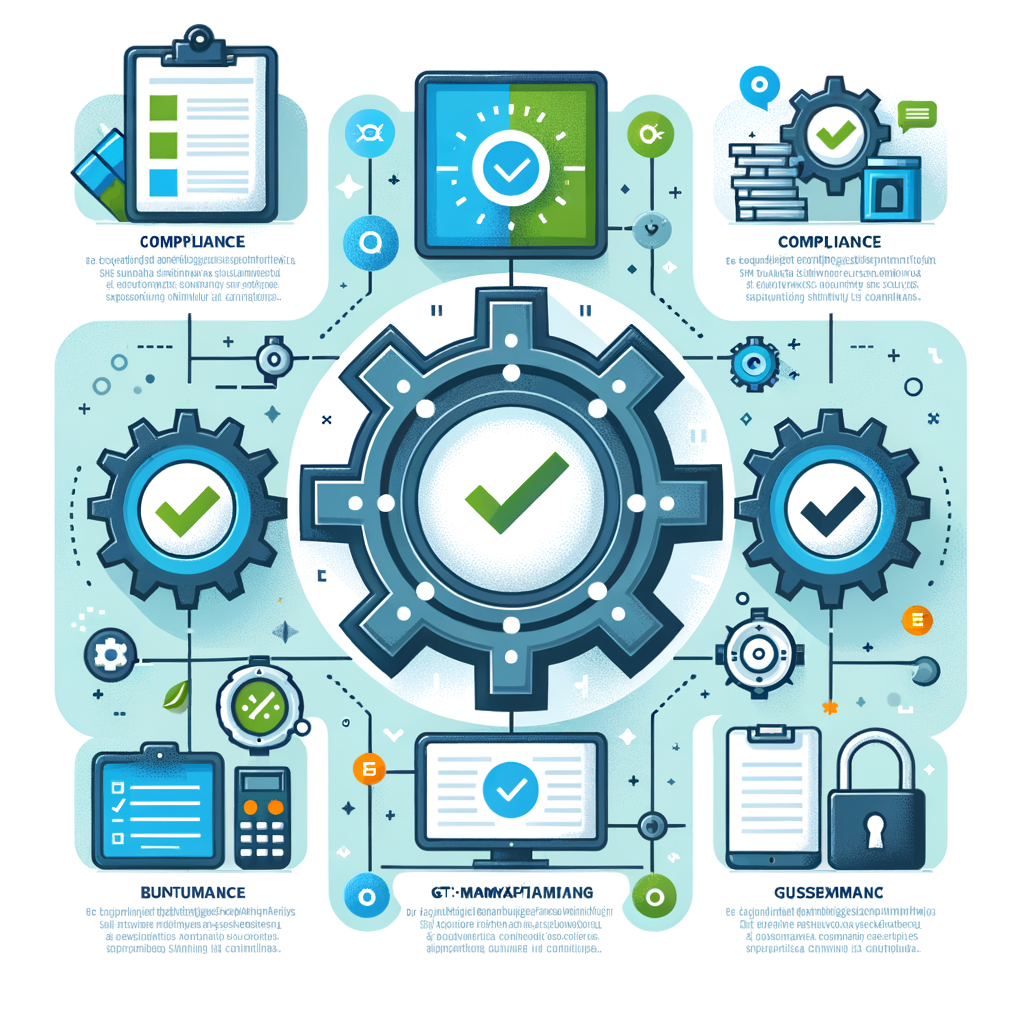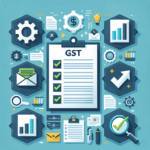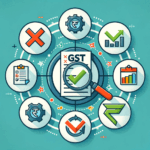The Role of Technology in Ensuring GST Compliance: A Guide for Indian Businesses
The Goods and Services Tax (GST) system marked a monumental shift in India’s tax landscape. While it aimed to create a unified market, its complexities can often feel overwhelming, especially for small business owners and startups. If you find yourself buried in spreadsheets, struggling to match invoices, and constantly worried about filing deadlines, you’re not alone. The challenges of manual compliance are very real, but the modern solution is clear: leveraging technology compliance solutions. This article will explore how technology for GST compliance India simplifies every step of the process, from invoicing to return filing, and why embracing these digital tools is no longer an option but a necessity for business growth and peace of mind.
The Core Challenges of Manual GST Compliance
Before we explore the solutions, it’s essential to understand the specific pain points that make manual GST management a high-risk and resource-draining activity. For many businesses, compliance feels like navigating a maze blindfolded, with each wrong turn leading to potential financial penalties and operational bottlenecks. The traditional approach, relying heavily on manual data entry and spreadsheets, is fraught with inefficiencies and errors that can prove costly in the long run.
The Labyrinth of GST Returns (GSTR-1, GSTR-3B, GSTR-9)
At the heart of GST compliance is the regular filing of various returns, each with its own set of rules and deadlines. GSTR-1 is a monthly or quarterly statement of all outward supplies (sales), detailing every invoice issued. GSTR-3B is a monthly summary of both sales and purchases, where you declare your tax liability and claim Input Tax Credit. Finally, GSTR-9 is the annual return, a comprehensive consolidation of all your monthly filings throughout the financial year. Manually compiling this vast amount of data from different sources is not only tedious but also highly susceptible to human error. A single misplaced decimal or an incorrect GSTIN can lead to mismatches and notices from the tax department.
The Critical Puzzle of Input Tax Credit (ITC) Reconciliation
Input Tax Credit (ITC) is the cornerstone of the GST regime, allowing you to deduct the tax you’ve already paid on inputs (purchases) from the tax you owe on your outputs (sales). However, claiming ITC isn’t automatic. You must meticulously match every purchase invoice with the data uploaded by your suppliers in their GSTR-1, which reflects in your GSTR-2A and GSTR-2B forms. Manually comparing hundreds or thousands of invoices is a Herculean task. A mismatch can occur for many reasons—a supplier’s error, a delayed filing, or an incorrect invoice number. Without a systematic process, businesses risk losing legitimate ITC, which directly impacts their cash flow and profitability.
Keeping Up with E-Invoicing and E-Way Bill Mandates
The government is progressively digitizing the entire tax ecosystem. Mandates like E-invoicing require certain businesses (based on turnover thresholds) to generate a unique Invoice Reference Number (IRN) from the official Invoice Registration Portal (IRP) for every B2B invoice. Similarly, E-way bills are required for the movement of goods exceeding a specific value. These mandates have made real-time digital compliance a legal requirement. Attempting to manage these processes manually—generating an invoice, then logging into a separate portal to generate an IRN or E-way bill—is inefficient and impractical, especially for businesses with high transaction volumes. For the most current information on these mandates, business owners should always refer to the official GST Portal.
How Technology Compliance Solutions Streamline GST
This is where technology transforms from a convenience into a core business asset. Modern technology compliance solutions are designed specifically to tackle the challenges of the Indian GST framework. By automating repetitive tasks and providing real-time data insights, these tools empower businesses to achieve accuracy and efficiency, thereby ensuring compliance through technology. These sophisticated platforms handle the heavy lifting, allowing entrepreneurs to focus on strategic growth rather than getting bogged down in administrative tasks.
Automation: From Data Entry to Return Filing
The single biggest advantage of tech-based compliance solutions India is automation. The journey begins with invoicing; a good GST software automatically creates compliant invoices with the correct tax rates and details. It can also use Optical Character Recognition (OCR) technology to scan and extract data from purchase bills, completely eliminating error-prone manual data entry. This clean, accurate data then flows seamlessly into the return preparation module. Advanced digital compliance tools India can auto-prepare your GSTR-1 and GSTR-3B with just a few clicks, populating them with verified data from your sales and purchase records, saving countless hours of manual work each month.
Real-Time ITC Reconciliation and Mismatch Reporting
Instead of a painful month-end scramble, technology enables continuous, real-time ITC reconciliation. A GST compliance tool automatically fetches your GSTR-2A/2B data from the GSTN portal and compares it against your purchase register. The software instantly flags any discrepancies, such as invoices present in your books but missing from GSTR-2A, or mismatches in invoice value or tax amount. This allows you to proactively contact your vendors to rectify errors long before the filing deadline, ensuring you can claim 100% of the eligible ITC you are entitled to without any last-minute surprises.
Seamless Generation of E-Invoices and E-Way Bills
For businesses subject to e-invoicing and e-way bill regulations, integrated technology is indispensable. Instead of a multi-step manual process, a good GST software connects directly to the government portals via APIs. This means you can generate a validated e-invoice with its IRN and QR code directly from your billing screen with a single click. Similarly, when dispatching goods, the system can use the invoice data to generate an e-way bill instantly. This seamless integration not only saves time but also ensures that all your compliance documents are generated accurately and stored centrally.
A Centralized Digital Record for Audits and Notices
In the event of a departmental audit or a notice, having organized records is your best defense. Technology provides a secure, centralized repository for all your GST-related documents—sales invoices, purchase bills, filed returns, reconciliation reports, and communication with vendors. Instead of searching through dusty files or scattered folders, you can retrieve any required document in seconds. This digital trail provides irrefutable proof of your compliance activities and makes responding to official queries a straightforward and stress-free process.
Choosing the Right Technology for Tax Compliance in India
With a growing market for compliance tools, selecting the right one is crucial. The goal is to find a solution that not only meets your current needs but can also scale with your business. The best technology for tax compliance India integrates smoothly into your workflow and simplifies complexity rather than adding another layer to it. As you evaluate different options, consider the latest tech innovations in compliance India and how they can directly benefit your operations.
Key Features to Look For:
- Cloud-Based Platform: A cloud-based solution offers the flexibility to access your GST data and file returns from anywhere, at any time. It also ensures your data is backed up securely and that the software is always up-to-date with the latest GST rule changes.
- Integration with Accounting Software: The tool should seamlessly integrate with your existing accounting or ERP software, such as Tally, Zoho, or QuickBooks. This avoids the need for duplicate data entry and ensures that your financial records are always in sync with your tax filings.
- Scalability: Your business is going to grow, and your compliance tool should grow with it. Choose a solution that can handle an increasing volume of transactions without slowing down, ensuring it remains a valuable asset for years to come.
- Data Security: You are entrusting the software with sensitive financial data. Ensure the provider uses robust security measures, including end-to-end data encryption and secure, Tier-IV data centers, to protect your information from unauthorized access.
- User-Friendly Interface & Support: Technology should simplify your life, not complicate it. Look for a clean, intuitive interface that is easy for non-technical users to navigate. Equally important is reliable and responsive customer support to help you resolve any issues quickly.
The TaxRobo Advantage: Blending Technology with Expertise
While powerful software is a critical component, true compliance excellence comes from combining technology with human expertise. The technology role in business compliance is to automate and organize, but the role of an expert is to interpret, strategize, and guide. This is where TaxRobo offers a unique and comprehensive solution.
More Than Just Software
At TaxRobo, we understand that simply providing a tool is not enough. We combine our state-of-the-art compliance platform with a dedicated team of Chartered Accountants and tax professionals. Our software handles the automation, real-time reconciliation, and error-free filing, while our experts provide the crucial oversight. They review your data, interpret complex GST provisions relevant to your industry, and ensure your business is not just compliant, but also tax-efficient. This blend ensures you get the best of both worlds: the speed and accuracy of technology and the wisdom of seasoned professionals.
Proactive Compliance Management
Our approach to technology helping compliance India is proactive, not reactive. The TaxRobo system is configured to send you timely alerts for filing deadlines, so you never miss a due date. Our platform’s advanced analytics can identify potential areas of ITC loss before they happen, allowing us to work with you and your vendors to plug these gaps. Beyond filing, our team provides strategic advice on GST planning, helping you structure transactions in the most advantageous way. We don’t just help you file returns; we become your trusted partner in navigating the entire financial compliance landscape.
Looking for a reliable partner to manage your GST compliance? Contact TaxRobo for a free consultation today!
Conclusion
In today’s digital-first economy, attempting to manage GST compliance manually is not only inefficient but also fraught with financial risk. The complexities of the law, coupled with strict deadlines and digital mandates, make it clear that embracing technology is the only viable path forward. From automating data entry and return filing to simplifying ITC reconciliation and e-invoice generation, technology compliance solutions provide the accuracy, speed, and peace of mind that every business owner deserves. This strategic investment empowers you to move beyond the complexities of tax and focus on what you do best—growing your business.
Don’t let GST compliance slow you down. Explore how TaxRobo’s tech-enabled services can transform your business.
Frequently Asked Questions (FAQs)
1. Can a small business manage GST without any special technology?
While technically possible for a business with a very low number of transactions, it is highly risky and inefficient. The potential for human error in data entry, the difficulty in manually reconciling ITC, and the risk of incurring penalties for late or incorrect filings are significant. As a business grows, tech-based compliance solutions India become essential for maintaining accuracy and saving valuable time.
2. What is the difference between my accounting software and a dedicated GST compliance tool?
Basic accounting software is excellent for recording income, expenses, and managing day-to-day financial health. However, a dedicated GST compliance tool is specialized for the intricate requirements of the GSTN. It offers advanced features like automated reconciliation of purchase data with GSTR-2B, validation of data against GSTN rules before filing, direct integration with the GST portal for seamless filing, and one-click generation of e-invoices and e-way bills.
3. How secure are these online technology compliance solutions?
Reputable providers prioritize data security above all else. Leading solutions, including those offered by TaxRobo, use industry-standard security protocols such as 256-bit SSL encryption for data in transit and secure, access-controlled cloud servers for data storage. Always choose a provider that is transparent about its security practices and has a proven track record of protecting sensitive client information.
4. If I use a GST tool, do I still need an accountant?
Yes, and this combination represents the ideal compliance strategy. A GST tool is brilliant at automating repetitive, data-heavy tasks, eliminating errors and saving time. An accountant or a tax firm provides the indispensable human element: strategic advice, interpretation of nuanced tax laws, tax planning to optimize your financial structure, and expert guidance during complex situations like audits or departmental notices. The tool handles the “what,” while the expert handles the “why” and “how.”



